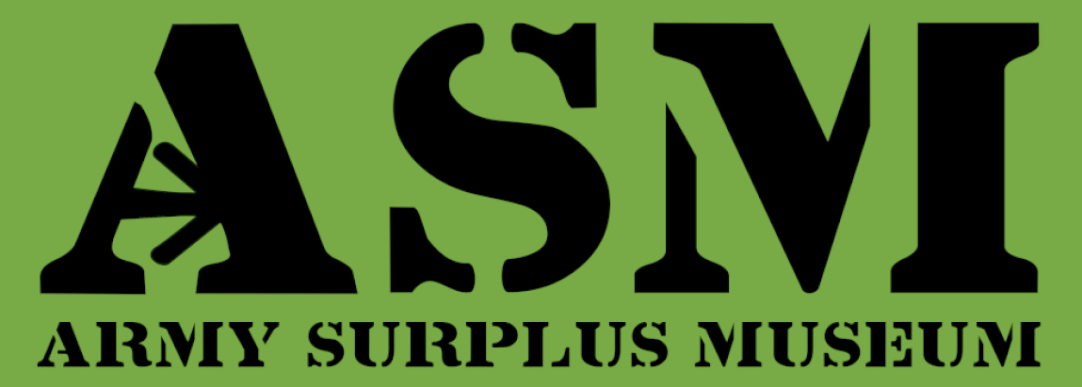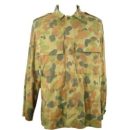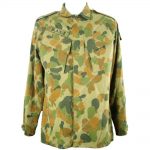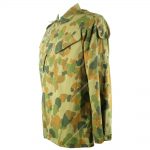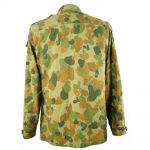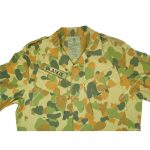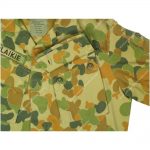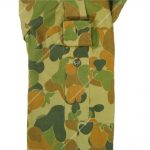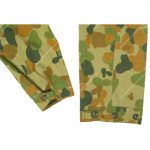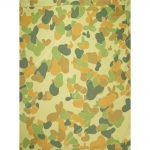Shirt, Combat, DPCU
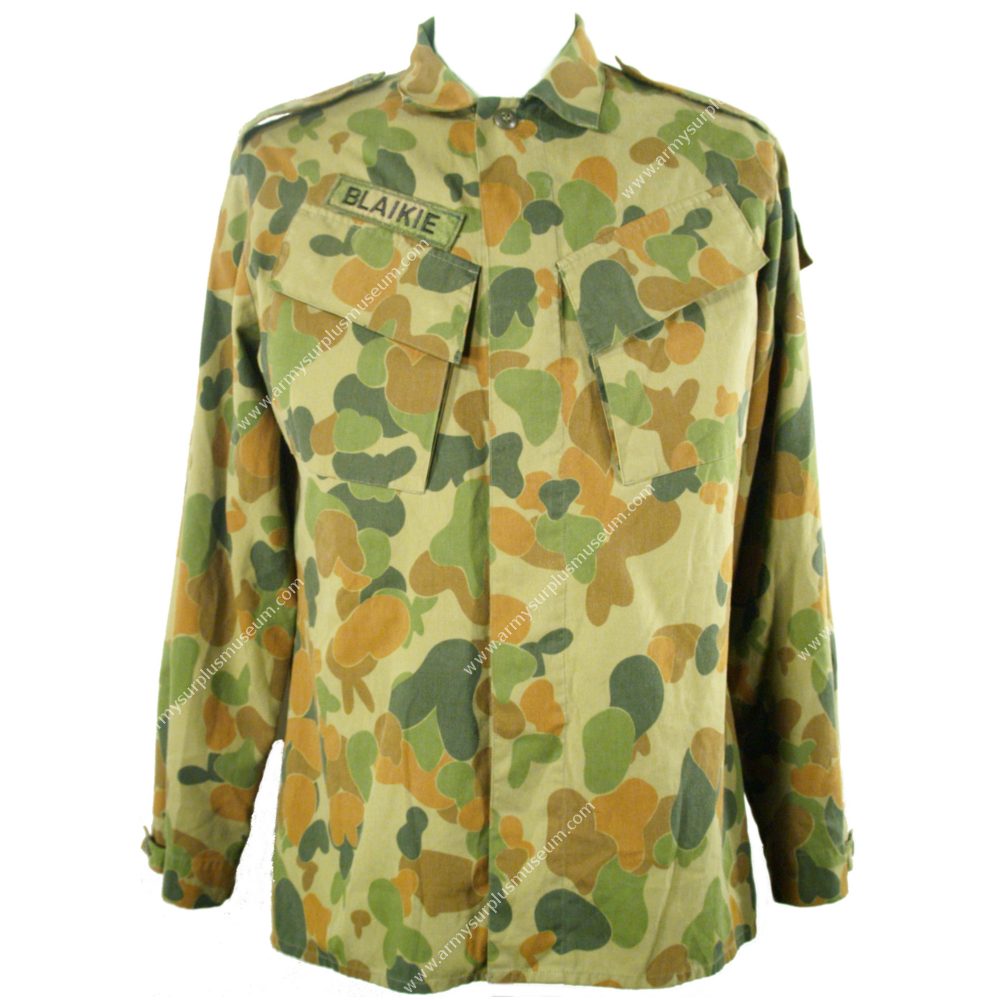
General Information
Name: Shirt, Combat, DPCU.
Country of Origin: Australia.
Manufacturer: Australian Defence Agency (ADA).
Date of manufacture: 1993.
NATO Stock Number (NSN): 8415-66-130-0033.
Camouflage Pattern: Disruptive Pattern Camouflage Uniform (DPCU), Auscam.
Equipment Family: Disruptive Pattern Camouflage Uniform (DPCU).
Size: 100/ Regular.
Chest- 100cm.
Height- 170/180cm (Regular).
Volume Capacity: 2L.
Top pockets- 1L each.
Pen pocket- N/A.
Weight: 250g.
Windproof: Yes.
Waterproof: No.
Similar Objects
History
The Shirt, Combat DPCU, was initially issued on a trial basis to Australian military personnel in early 1982 and was later mass-issued in 1989 as the standard-issue field shirt. It is part of the Disruptive Pattern Combat Uniform (DPCU).
In the early 1980s, Australia began developing a new style of uniform that was made from a cotton and polyester blend fabric and printed with the new camouflage pattern, in response to the adoption of the disruptive camouflage pattern. The new uniform had a larger carrying capacity and was more comfortable than the Jungle Green uniform it was intended to replace.
While an early model of the Shirt was based on the shirt worn by US. troops during the Vietnam War, later models had a more streamlined look with only two bellowed top pockets, a tapered waist, and a few changes to the sleeve cuffs.
This style of Shirt remained in service until 2014 when it was removed from service and replaced with a new design of DPCU uniform.
Description
The shirt features a turn-down collar and a button-down front with concealed buttons. It has two angled, bellowed top pockets and two larger bellowed bottom pockets. The upper arm of the left sleeve includes a small rectangular pocket for holding a field dressing and pens. All pockets have button-down lids with concealed buttons, and the top pockets are set at an angle.
The sleeves have reinforcing panels extending from the elbow to the forearm. The cuffs adjust around the wrists with button-down tabs that offer three points of adjustment. The body of the shirt is tapered at the waist.
Examples
Example One
Example one was produced by the Australian Defence Agency (ADA) in 1993.
The Shirt is fabricated with a 50/50 blend of cotton and polyester and now only has two top pockets, these have been redesigned with a plane, square front. The side bellows have been reduced in size and the bottom bellow has been removed. The upper-arm now has a small rectangular pocket with two pen channels and a button-down lid, the sleeve cuffs adjust using tabs that are have a much simpler design.
The Shirt has a back yoke that limits the movement of the Shirts back tail. The elbows are reinforced with a cloth patch that extends down the forearms. The sleeves have tube style cuffs that adjust around the wrists with button down cloth tabs.
Object Number: 8730-360-36101.
